How to plant garlic cloves correctly in spring?
Many summer residents and gardeners are wondering - is it possible to plant garlic in spring? Yes, you can. And although traditionally garlic planted in autumn, spring planting is also possible and gives quite good results.
Content:
- A few words about the spring planting of garlic
- The best varieties of garlic for spring planting
- Preparing the site and garlic for planting
- Landing terms and rules
- Care Tips
- Diseases and pests, the fight against them
- Harvesting and storage methods for garlic
A few words about the spring planting of garlic
It is generally accepted that garlic is planted in the fall. This agricultural technique is called winter. This is practical - in the spring there will be less hassle and you can harvest earlier. But there are times when it was not possible to plant garlic before winter, there were many urgent matters or frosts hit early. And it so happens that the garlic is planted in the fall, but the winter was little snow and the harvest died in the ground.
In such cases, you can plant garlic in the spring. It should be borne in mind that the landing should be timely - no later than the end of April. If you delay planting, then the harvest will be very small.
Garlic is divided into two types:
- Shooter - one that throws out arrows when ripe;
- Non-firing - the shooter does not.
The first species is good for planting in autumn, it tolerates low temperatures well and gives a rich harvest. The second type is suitable for spring planting, as it does not have winter hardiness. And, although it gives a small harvest, it is stored much better than the arrowhead species.
Therefore, garlic can be divided into two varieties:
- winter - one that is planted in the fall, before the first frosts
- spring - the one that is planted in the spring, mainly in the second half of April
The best varieties of garlic for spring planting
Today, the following varieties of spring garlic are popular in central Russia:
- Gulliver is a medium late, non-shooting variety. Combines a rich harvest and long-term keeping quality. Bulbs are rounded off-white. Resistant to disease. The height of the stem can reach from 50 to 70 cm. The number of cloves in the bulb is from 4 to 8 pieces, and the weight of one clove is from 2 to 5 grams. Ripe bulbs can weigh up to 40 grams.
- Yelenovsky is a mid-season non-shooting variety. Harvestable. The color of the outer husk is white, the inner one is creamy pink. Long-term storage is possible. The height of the stem can reach from 50 to 70 cm. The number of cloves in a bulb varies from 3 to 7 pieces, and the weight of one clove is from 5 to 8 g. The weight of ripe bulbs can reach from 30 to 50 grams. Disease resistance is high.
- Ershovsky is a mid-season non-shooting variety. Gives high yields. The bulb is covered with white scales. The mass of 1 onion is up to 35 g. The number of cloves in the onion is 16-25. Possesses good keeping quality. Resistant to diseases.
- Sochi 56 is a mid-season non-shooting variety. High-yielding, the number of cloves in the bulb is 15-30 pcs., The mass of 1 bulb is up to 50 g.
- Victorio is a non-shooting variety, there is a light waxy bloom on the leaves of the plant. Bulbs with creamy white scales, weight - up to 40 g, the number of cloves - up to 15 pieces.The harvest is well kept.
The northern regions of Russia can also be engaged in the cultivation of this vegetable. Such varieties of spring garlic are known:
- Novgorodsky (mid-late - 120-130 days);
- Aleiskiy (mid-season - 110–122 days);
- Novosibirsk (mid-season 75–85 days).
All these varieties are well adapted to the climate of the northern regions and give good yields.
Preparing the site and garlic for planting
Since garlic is planted in the spring, you need to fertilize the land in the fall. After the plot is plowed, the place for planting garlic should be fertilized with semi-rotted manure, about 1 kg per 1 m2. It is also recommended to feed with a complex mineral fertilizers.
It is important to know: for planting garlic, you need to choose a new place, since only after 3 years, garlic pests are removed from the area where the garlic grew.
For good growth of garlic, it is better to use a piece of land on which the legumes grew, cucumbers or cabbage... Where it grew up last year potato and onion, there will be no big garlic harvest.
Before planting, the garlic must be carefully examined. Divide the heads into cloves. Throw away all sick, dried teeth. If some have sprouted, then they can be planted, this will not affect the quality of the crop, it just will be a little earlier. Immediately before planting, the cloves of garlic must be soaked in a weak potassium permanganate solution for 30 minutes. This procedure is needed to disinfect and prevent diseases.
Landing terms and rules
The optimal time for planting is the end of April. It is recommended to adhere to the dates in a special summer cottage calendar. But in different regions, the temperature regime is different. And proceeding from the fact that garlic is not afraid of the cold, you can plant it as soon as the ground thaws and you can dig the ground.
When lining the beds, it is worth observing the distance between the rows - 30-35 cm, and maintaining the gap between the teeth - about 10 cm.It is necessary to plant so that the ground covers the teeth by 3-4 cm.
After planting, it is advisable to mulch the garden with humus and water.
Advice: if garlic is planted for greenery, it is advisable to settle it under trees and near shrubs so that they stay in the shade for as long as possible and ripen more slowly. Then fresh greens will delight all summer.
Care Tips
Like any vegetable, garlic requires glaze... The frequency will depend on terrain and weather conditions. You need to focus on the soil - the main thing is that it does not dry out. Drying tips of garlic leaves will also signal the urgency of watering. The water temperature should be within 15-20 C.
It is convenient to weed and loosen the soil in the beds the next day after watering. When the first shoots appear, you can introduce fertilizing with nitrogen content.
Important! Fresh manure cannot be used as the first complementary food, this will provoke diseases and the death of garlic.
After 10-15 days, you need to enter another feeding - any liquid mineral fertilizer... When there are 5-6 leaves, the garlic has already formed cloves, which means that you need to feed it with infusion ash... In the process of growing garlic, you need to weed it and watch for the appearance of arrows. They should be pruned as early as possible so that nutrients are not wasted on seed ripening.
Tip: One or two arrows can be left, so that later on it is easy to determine if the garlic is ripe. What it looks like: an arrow from a twisted state will return to a straight line.
Pests and diseases of garlic, the fight against them
Garlic itself is an insecticide, but it can also be susceptible to disease and attack by insect pests:
Nematode
- What's happening. The insect feeds on garlic juice. In this case, the stem bends, growth stops, the bulb is affected and the garlic dies.
- How to fight. Before planting, disinfect the cloves of garlic in hot water up to 50C for 15 minutes or soak in slightly salted water for a few minutes.
Onion fly
- What's happening.The tips of the leaves and stems turn yellow, upon examination (you need to pull out the bulb), there will be yellow worms in the hole and on the bulb itself.
- How to fight. For 1 bucket of water, give 1 glass of rock salt. Pour the solution abundantly into the grooves between the rows of garlic. If it does not help, then you need 30 ml of ammonia for 1 bucket of water. Pour the solution into the same grooves. Strong remedy - urea or mullein.
Onion Lurker
- What's happening. The tops of the leaves dry, the stems turn yellow, white spots with holes inside appear on the leaves.
- How to fight. Evening pollination mixture: wood ash powder, dry mustard, ground red or black pepper. Tip: Sprinkle lightly on the plants before applying the powder.
Mosaic
- What's happening. Caused by a viral pest, it is characterized by the appearance of pale green stripes along the leaves or small long specks. The arrows twist, the head with inflorescences becomes like a sponge, few seeds are obtained, and they germinate very poorly.
- How to fight. Check the garlic before planting, choose only healthy cloves. Remember the rule crop rotation... If a disease is detected, immediately pull out the affected plants and discard.
Fusarium
- What's happening. A fungal disease characterized by loss of leaves. The stems are covered with a bloom of a pale pink color, the roots rot.
- How to fight. Check the garlic before planting, select only healthy cloves. Observe storage rules in winter. Observe the rule of crop rotation.
Harvesting and storage methods for garlic
The second half of August is marked by the harvest garlic... You can determine the maturity of this vegetable by the massive drying of the lower leaves and the wilting of the upper ones. Also, at maturity, the arrow of the garlic straightens. Dig the garlic in dry weather and leave it to dry in the sun for a couple of days after harvesting from the beds.
It is advisable to put away for long-term storage in a ventilated room.
An attic or shed works well for this. When the dug garlic dries up, you need to carefully cut off the root and stem from it. Can be folded into boxes lined with paper at the bottom. It is not necessary to spread the garlic heads thickly, because airing is important.
Spring garlic is very well preserved, so thrifty gardeners for the whole winter are provided with vitamins and material for planting next year!
More information can be found in the video:



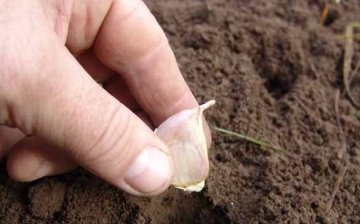

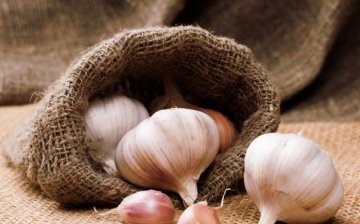
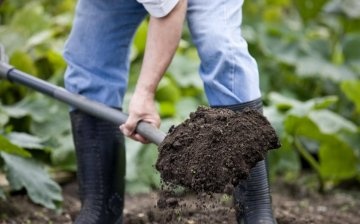

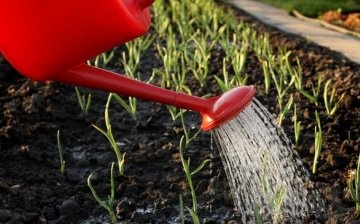
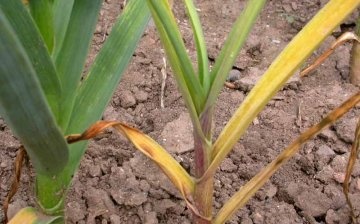
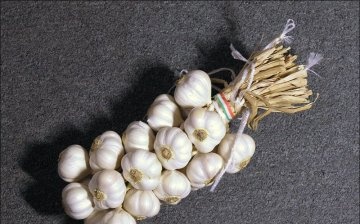








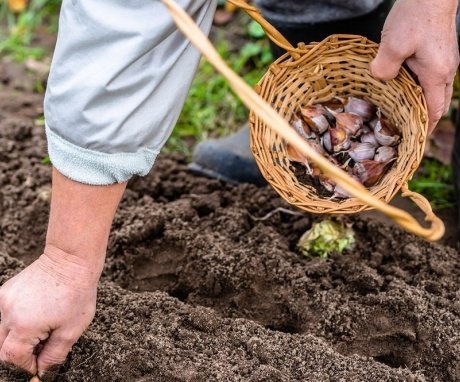
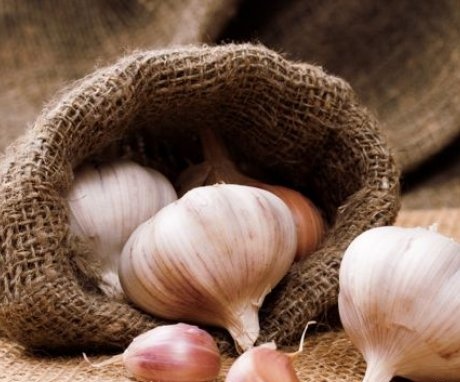
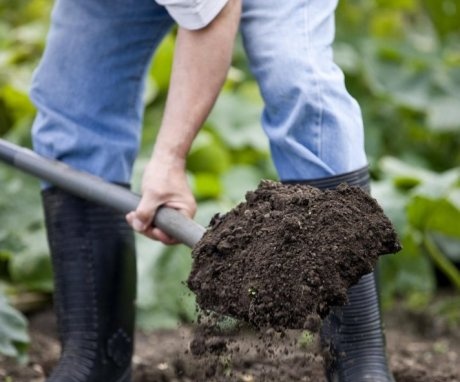
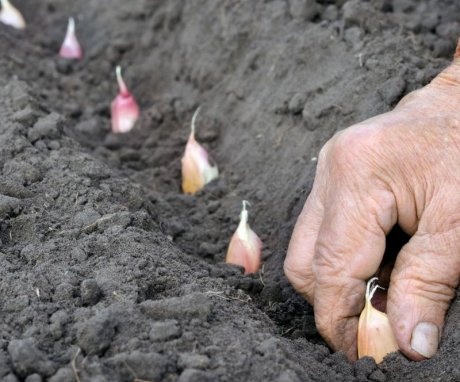

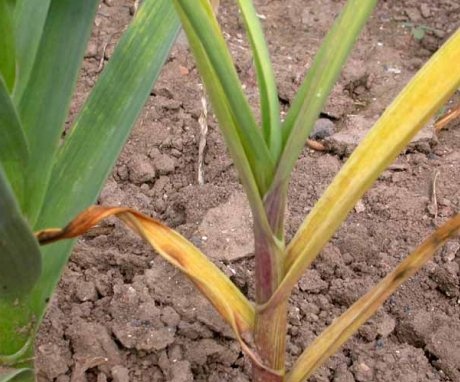

We always plant garlic before winter, never tried it in spring. Of course, if the winter planting dies, then you will have to plant the cloves in the spring, but the yield will be much lower. In addition, garlic is very poorly stored. We already have solid waste and if you keep it until spring, then there will be nothing to plant in April.